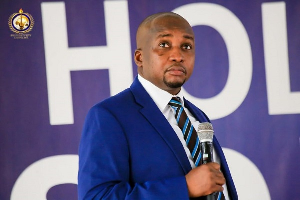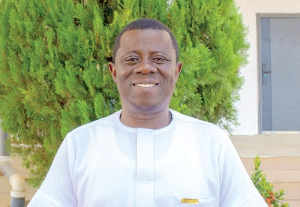Ten Years of the NHIS: Has the scheme provided financial protection for the poor and the Vulnerable?
In 2003, Ghana made a bold and progressive step forward by introducing a National Health Insurance Scheme (NHIS) that recognised the detrimental impact of user fees, the limitations and low coverage of Community Based Health Insurance (CBHI), and the fundamental role of public financing in the achievement of universal health care. The NHIS turns 10 years this year and the National Health Insurance Authority (NHIA) has already launched an elaborate 10th Anniversary celebrations plan in September 2013 under the theme: “Towards Universal Health Coverage: Increasing Enrolment whilst Ensuring Sustainability.” One important question which requires reflection in the midst of the celebrations is: Has the NHIS provided financial protection for the poor and the Vulnerable? This piece aims to shed light on this question.
The intention of the NHIS to remove user fees and provide financial protection against out-of-pocket-payments (OOPs) and high costs of health care, particularly for the poor and vulnerable is well known and unequivocal. The decision to exempt formal workers who are SSNIT contributors, SSNIT pensioners, those aged under-18 years or 70 years and above, pregnant women and indigents from paying premium all suggest the social protection focus of the scheme. The NHIA reports that over 70% of its members are premium-exempt. The decision to ensure that almost 95% of diseases in the country are to be treated " for free" further lend credence to the financial protection feature of the scheme. Nobody thus questions the (expected) benefits associated with the NHIS. The question as to whether the NHIS has benefited the poor or otherwise would have demanded an obvious answer--yes. But I will sound a caution to look at the practice of the scheme critically before conclusions are drawn on this topic. Consequently, any constructive discussion on NHIS need to clearly distinguish the intent or potentials (i.e. what the scheme was supposed to do) from the practice (what it is actually doing).
Let me begin by this good news that some studies have shown that, on average, national Out-of-pockets payments (OOPs) have dropped by at least 4% over the past decade although household level OOP remain about 22- 37 % of total spending, which is well above the 15-20% WHO financial protection threshold.
The starting point for discussing the performance of the NHIS, as to whether it has provided financial protection or not, lies in the coverage of the scheme. Coverage looks at how many of the population are covered under the scheme as active subscribers. The latest information on this was contained in the statement issued in commemoration of the 10th Anniversary of the scheme in September 2013 by the NHIA. The statement stated that, cumulatively, the NHIS has had 22 million subscribers since its inception in 2003, 9 million of which remain active subscribers (Daily Graphic,6th Sept, 2013). This equates to about 35% of the over 25 million people of Ghana. Let me ask these critical questions: Why is it that only about 9 million of the cumulative 22 million people are active? What happened to the over 13 million people? What is preventing these people from becoming active subscribers? Why are they unable to renew their cards? These questions should engage attention in the anniversary reflections and celebrations!
It is well known that by the design of the NHIS, people without valid/unexpired cards pay full cost (or the cash and carry system). Thus, it is only people with valid and active cards that are able to access the NHIS benefits. At a civil society conference held at the Kama Conference Centre on 31st October, 2013, a representative of the NHIA stated that the private and the other mutual insurance tiers account for about 6% of the population, thus bringing the total population insured to 40%. So, in effect there are about 60% of the population who are uninsured and still living with the cash and carry system. This clearly runs contrary to the policy objective of the scheme which aimed to cover the whole population within 5 years. In absolute terms, there are more than 13 million people who are not insured under any form of insurance to enjoy the benefits associated with them. Viewed this way, one may not be wrong to suggest that the financial protection objective of the NHIS has been far from being adequately achieved.
One would expect that, the generous benefit package of the NHIS and the inherent financial protection associated with it should be more than enough motivation for the poor to enrol onto the scheme. But the correlation is not that linear. Several studies are showing that many people particularly the poor face serious constraints in terms of enrolling onto the scheme. Chief among these constraints is the perceived high cost of premium (which must be paid annually). For the elderly, pregnant women, children and other groups that are exempted from paying premium, the process of becoming a subscriber even requires registration/processing fees, which also creates barrier. Of course other barriers such as to registration, cost of transportation to the registration centres all affect enrolment.
For many more poor people living on less than 2 cedis a day, it is more difficult to mobilise the annual premium of about 7 to 48 cedis compared to their rich or non-poor counterparts who in several cases have to pay just the processing fees of about 5 cedis to become members. In effect, the rich have a high chance of enrolling onto the scheme than their non-rich counterparts. Growing number of evidence are showing that NHIS is riddled with issues of inequity, which needs to be checked.
One of the earliest comprehensive evaluation of the NHIS that signalled the inequity aspects of the scheme was a study carried out by the Health Systems 20/20 Project and the Research and Development Division of the Ghana Health Service. Among other things, the study reported that: "about half of the individuals in the richest wealth quintile were insured under NHIS, compared to less than one-fifth of individuals in the poorest quintile".
A more recent study (published in the Health policy and planning journal) by James Akazili of the Navrongo Health Research Centre and colleagues from the Ghana Health Service (Akazili, Garshong, Aikins, Gyapong, & McIntyre, 2012), concluded that the distribution of total benefits from using health care in Ghana is pro-rich. Their study discovered that: "the richest quintile gained almost double (24%) the benefits gained by the poorest (13%). The two richest quintiles accounted for almost half of total health care benefits, whilst the two poorest quintiles gained less than 30% of total public and private health care benefits. The distribution of benefits is pro-rich in both the public and private sectors, but particularly in the private sector. When benefits are disaggregated by type of care, total public and private sector benefits for both inpatient and outpatient care were pro-rich".
It appears, therefore, that, despite attempts to portray the NHIS as “pro-poor”, individuals with low incomes and who are covered under the scheme, are far outnumbered by affluent ones. This has serious implications of the financial protection ideals of the scheme to the poor and vulnerability in the society.
Thus far, I have highlighted that there are approximately 15 million Ghanaians who are not financially protected by the NHIS. It is very plausible that these people continue to pay out-of-pocket in the devilish ‘cash-and-carry’ system, more than a decade after the implementation of the NHIS. I have also flagged the point that, the rich are twice as likely to enroll in the NHIS as the poor and annual insurance premiums (plus registration/processing fees) are regressive and create barrier for enrolment for several poor people. The next aspect I will touch on relates to financial protection of the scheme once people get enrolled.
Ideally (by design), the NHIS covers about 95% disease burden, which is a good news. But the NHIS has not been able to remove several health related cost. Worryingly, it is not just the uninsured who incurs out-of-pocket expenses. Research shows that despite the NHIS’s generous benefit package, at certain times and in several health facilities, subscribers are still made to pay for services that should be covered by the NHIS. In actual fact, certain services which were free to subscribers in 2003 when the NHIS began are no longer free, including some requested services, such as laboratory tests, and diagnostics, for which subscribers are now required to pay in several public facilities. Several subscribers still make co-payment (additional payment made by the insured person) in several health facilities, contrary to what they public have been made aware of.
Conclusively, the NHIS has had very good intentions to provide financial protection to the poor and vulnerable in the society. However, there are over 13 million who are outside the insurance scheme at present and therefore remain financially unprotected (to enjoy the benefits of the scheme). Evidence is growing that the NHIS is more pro-rich contrary to its pro-poor claims, as it is more difficult for several poor people to pay the mandatory annual premium before they can become members of the scheme to enjoy the associated benefits. The foregoing thus highlights the points that it is not just enough if the NHIS has 95% disease burden; it is not enough if OPD and in-patient utilisation has doubled over the past four years; It does not matter too much whether significant resources including call centres have been set up for the scheme. What matters is that every resident of Ghana, not just few, would belong to a health insurance scheme that would guarantee equitable healthcare access and adequately cover him or her against catastrophic expenditure. With around 60 % or some13 million people uninsured (and hence financially unprotected), the task to remove the various enrolment barriers should be paramount in the 'teenage' period of the NHIS.
By: Albert A. Arhin
Email: rainfallaaa@yahoo.com
The writer is a Development Economist and a PHD candidate at the University of Cambridge, UK.
Opinions of Saturday, 2 November 2013
Columnist: Arhin, Albert A.
Ten Years of the NHIS: Has the scheme provided financial protection
Entertainment













